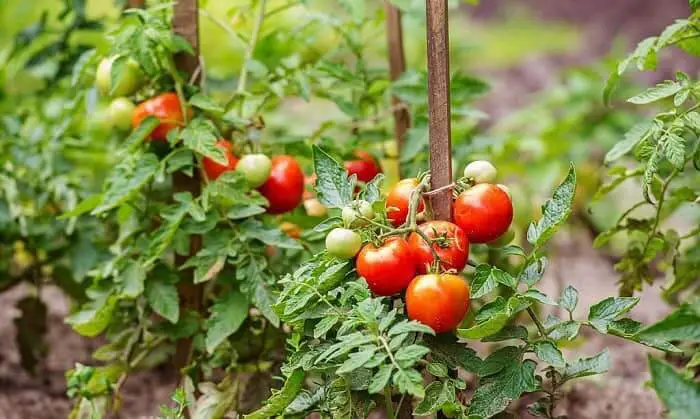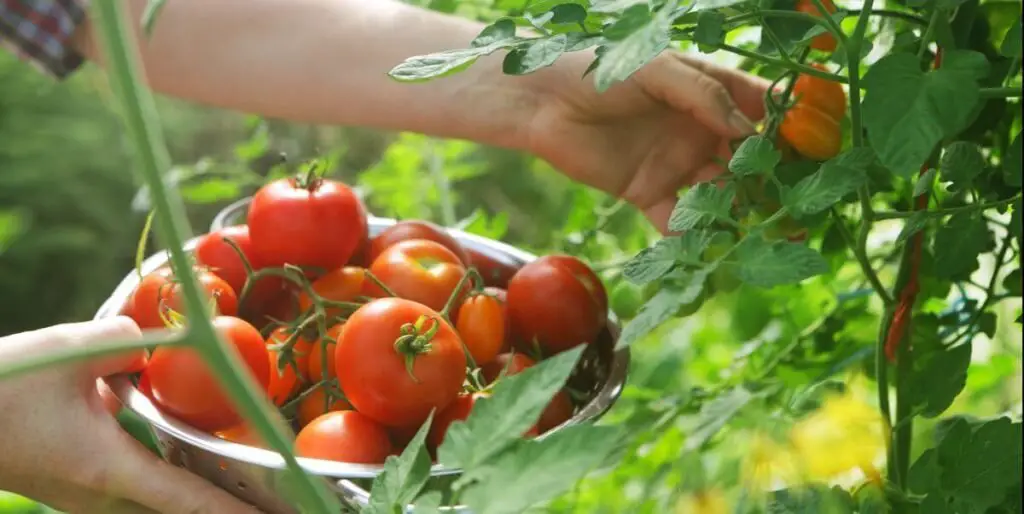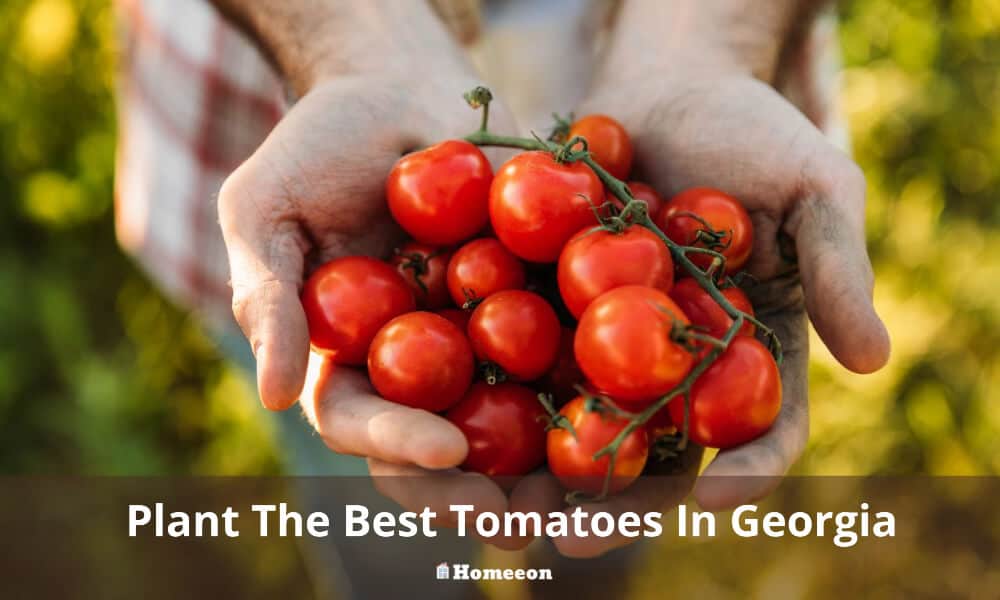Last Updated on August 15, 2023 By Emma W. Thomas
Plant tomatoes in Georgia between March and May for optimal results. This timeframe aligns with the state’s frost-free period, ensuring warmer temperatures that promote healthy growth and fruitful harvests of tomatoes.
When To Plant Tomatoes In Georgia
When it comes to planting tomatoes in Georgia, timing is crucial. In order to ensure a successful harvest, it’s important to know the right time to plant your tomato plants. Here is a handy listicle that outlines when to plant tomatoes in Georgia:
- Know your planting zone: Georgia is divided into different planting zones, which are determined by the USDA (United States Department of Agriculture). Knowing your specific zone will help you determine when to plant tomatoes. Georgia generally falls within zones 7a to 9a.
- Last average frost date: The last average frost date in Georgia varies depending on the specific region. For most parts of the state, the last average frost date falls between mid-March to mid-April. This is an essential factor to consider before planting tomatoes, as tomatoes are highly sensitive to cold temperatures.
- Start seeds indoors: To give your tomato plants a head start, it’s recommended to start tomato seeds indoors about six to eight weeks before the last average frost date. This will allow the plants to establish strong root systems and grow sturdy seedlings.
- Transplanting outdoors: Once the danger of frost has passed and the soil has warmed up, it’s time to transplant your tomato seedlings outdoors. In Georgia, this is typically around mid-April to early May. Make sure to harden off your seedlings before transplanting, gradually exposing them to outdoor conditions over a period of a week or two.
- Soil temperature: Tomatoes thrive best in warm soil temperatures. It’s ideal to plant your tomato seedlings when the soil temperature reaches at least 60°F (15°C). Cold soil can stunt growth and result in poor fruit development.
- Consider the variety: Different tomato varieties have different requirements and growth rates. Some varieties are more cold-tolerant, while others require longer growing seasons. Determine the variety you want to plant and choose one that suits your region’s climate and growing conditions.
- Fall planting: For those in southern Georgia or areas with longer growing seasons, fall planting is also an option. Planting tomatoes in late summer or early fall (around late July to mid-August) can yield a second harvest before colder temperatures set in. Just ensure that you choose determinate varieties that have a shorter growing period.
Best tomato variety to plant in Georgia

Heirloom plants are amazing since you don’t need a large garden to plant them. All you need is a container plus the right conditions, and you have the juiciest tomatoes growing in your backyard. There are two popular heirloom tomato varieties: determinate and indeterminate.
Determinate varieties
These do better in containers since they are compact and grow only to a maximum of 4ft tall. You only need to stack this breed of tomatoes when fruits start growing to support their weight. Determinate varieties produce fruits quite fast, and in less than three weeks, you’ll be ready to harvest. The only downside of this variety is that once you harvest, production goes down and they only produce a few fruits. The best determinate tomato varieties to grow in Georgia are San Marzano, Roma, and Mar Globe.
Indeterminate varieties
Indeterminate varieties grow best in cages or when stacked and they can produce fruits all seasons round. For these varieties, ensure you provide the right support to enjoy clusters of juicy fruits with every harvest. Most tomato varieties that we grow in our backyards are indeterminate including dwarf, cherry, brandy wine, and sun gold.
Requirements for growing tomatoes
For tomatoes to produce healthy and juicy fruits, you need to take care of them properly. Ensure you plant them in soil that’s rich in organic matter and is well-drained. You also need to apply fertilizer every month to boost nutrient absorption and water your tomatoes. Let’s look at these requirements in detail.
1. Soil
Just like any other plant, tomatoes do well in healthy and well-draining soil that is rich in humus or other organic matter. The soil should have a Ph range of between 6.0- 6.8 for optimum growth. You could consider having your soil tested for nutrients and Ph and correct any imbalance before planting.
2. Water
Tomatoes need regular watering since they love moisture, experts advise watering your tomatoes at least twice a week. The best procedure for watering your tomatoes is using a soaker hose or through drip irrigation. When watering tomatoes, try to avoid wetting the leaves as it may result in rotting and diseases. If you opt for drip irrigation, ensure your pipes go beneath the mulch layer for it to maintain moisture.
3. Light
Tomatoes need sunlight to grow and produce fruit. When planting your tomatoes either in a container or in your backyard, ensure there’s sufficient light. Tomatoes convert sunlight to energy that’s necessary for growing healthier fruits
4. Mulching
Mulching is the process of applying material such as straw or pebbles to the surface of the soil. These materials help in the retention of moisture, regulating the growth of weeds, and also improving soil composition. For tomatoes, it is advisable to apply a mulch of up to 3 inches.
5. Fertilizing
Adding fertilizer to your soil ensures the optimum growth of your tomatoes. Seaweed extract and fish emulsion are great options for tomatoes. You should apply fertilizer at least twice a month to replenish nutrients that might have been washed out by frequent watering.
6. Support
Tomato stems require support for them to bear the weight of the fruits. Stakes and cages are great options to offer support to your plant.
Step-by-step process of growing tomatoes

In this section, we walk with you through your tomato planting and maintenance journey until it’s time to harvest. These are the key steps to follow when planting tomatoes.
- Identify where you want to plant your tomatoes and confirm if you have healthy and well-draining soil. If you intend to use a container, choose a wide container that will give the plant ample space to blossom. Your container should also have some holes at the base to aid in drainage. Ensure that the space you choose to plant your tomatoes has access to sunlight.
- Choose the right seedling variety and decide whether you want to start from seeds or you want ready seedlings. If you intend to start from seeds, we advise starting early and placing the plant indoors where there’s access to sunlight. You can then transplant them in your garden or large container after the frost passes. The best time to plant your seedling outdoors is between mid-March and early May.
- When planting your seedlings, space them up to 20 inches apart to give each plant room and also to prevent diseases. You can mulch your plant at this point using organic matter such as straw.
- Once your plant is up, you need to water it at least twice a week. Ensure the soil is soaked up, and when rolled on your hands, it can form a ball without collapsing. Drip irrigation can be used when you have a lot of tomatoes in your garden. Ensure your drip goes under the mulch layer to help maintain the moisture. When tomato fruits are developing, ensure you water regularly to prevent calcium deficiency which causes splitting. After tomatoes ripen, you can reduce watering but ensure the plants don’t look withered at any time.
- Remove the bottom leaves that are at the foot of the stem when your plant is more than 2 feet tall. These leaves are prone to fungal diseases and soil-borne pathogens and removing them helps to minimize such issues.
- Prune suckers grow at the joint of two branches since they consume energy yet they won’t produce fruits. You can let the rest of the leaves be since they help in photosynthesis, but if you feel they prevent fruits from adequate sunlight, you can reduce some.
- Apply fertilizer at least once a month to keep your tomatoes healthy and rich in nutrients.
- In north Georgia, tomatoes are susceptible to blight which is a dark fungal growth. To get rid of blight, use a fungicide such as copper and keep your garden free from any organic debris.
- When your fruits start ripening, it is time to harvest. You can harvest tomatoes when still green or wait for them to ripen completely. For unripe tomatoes, store them in a room that’s well-ventilated and has a temperature of 21 degrees Celsius. For ripe fruits, you can refrigerate them and keep using them even for months.
Some fun facts about tomatoes
- Tomatoes are fruits and not vegetables
- Tomatoes are the world’s most demanded fruits. Over 60 million tons of tomatoes are produced annually
- In Spain, there’s an annual tomato festival where people throw tomatoes at each other for fun
- Tomato juice is the state drink in Ohio
- Tomatoes gain weight even after harvest as they ripen
Final word
Growing your own tomatoes is exciting and also economical. If you love gardening, then you will enjoy summer that’s full of tomato vibes. Growing tomatoes in your garden don’t have to be complicated; you only need passion and the right conditions. If you leave in northern Georgia, you can enjoy two seasons of tomato planting, the second being in July.
When planting tomatoes, ensure you choose the best organic soil that is well-draining. Choosing a sunny spot is also key in ensuring that your plants blossom. Ensure you water and fertilize tomatoes regularly for a healthy and sweet harvest. Organically grown tomatoes are tastier compared to commercially grown tomatoes. You can consider consulting an expert to have your soil pH and nutrient level checked. We hope that this information helps and inspires you to start your tomato farm. Ensure you apply the tips we have shared for a bountiful harvest.
References:
https://www.floridayards.org/when-to-plant-tomatoes-in-georgia/
https://www.autumnhillnursery.com/edibles-101/
Emma is a graduate of Domestic Science or Family and Consumer Sciences (Home Economics) from the University of Wisconsin. She has 7 years of experience Working with the strategic section of BestBuy and now writing full-time for Homeeon.
From Managing the Home, Interiors, Cleaning, and Exteriors to Gardening and everything about Making A Home Liveable – is her passion and this Homeeon is the result of this.
Emma loves decorating her home with the best stuff found online. She cares about quality over anything and writes reviews about them here in Homeeon. Get in touch with her over Pinterest.
Keep reading her blogs.

